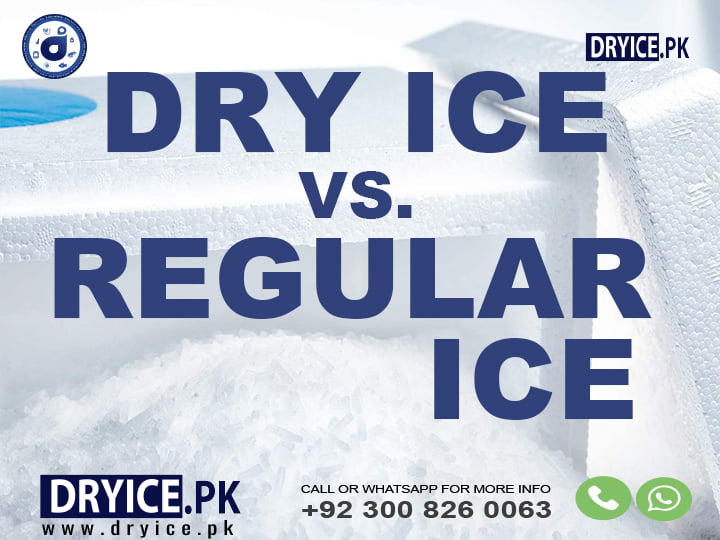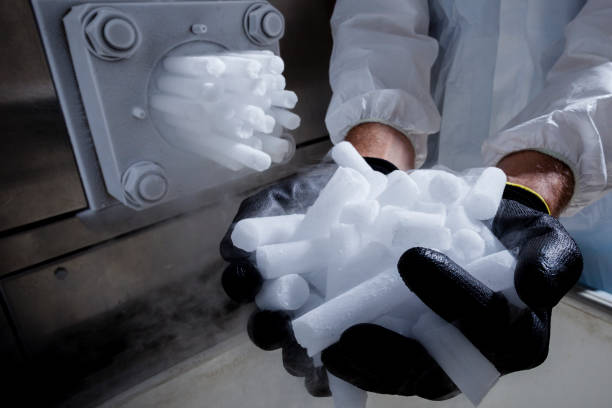
dry ice vs regular ice
With regards to keeping things cool, ice is a famous and powerful choice. Nonetheless, there are various kinds of ice accessible, including normal ice and dry ice. Both have their advantages and downsides, and picking the right one for your cooling needs relies upon a few elements. In this article, we will think about dry ice versus standard ice and assist you with concluding which one is the most ideal choice for you.
What is Regular Ice?

dry ice vs regular ice
Regular ice, otherwise called wet ice, is produced using frozen water. It is the most considered normal sort of ice and is effectively accessible in stores. Ordinary ice is normally used to keep food and refreshments cool, as well concerning clinical purposes. It is additionally utilized in enterprises like fishing, horticulture, and transportation.
Standard ice, otherwise called ice shapes or frozen water, is framed when water freezes at or underneath its edge of freezing over of 0°C (32°F). It is generally accessible and usually utilized for the purpose of cooling in day to day existence, like keeping food and refreshments cold or diminishing enlarging in wounds.
Pros and Cons of Regular Ice
Pros:
- Regular ice is easily available and affordable.
- It is safe to handle and use.
- It melts slowly, which makes it ideal for keeping things cool for a longer period of time.
- It can be easily made at home with a refrigerator or freezer
Cons:
- Regular ice can be messy as it melts and creates water.
- It takes up more space in a cooler or container than dry ice.
- It has a temperature of 32 degrees Fahrenheit, which is not as cold as dry ice.
- It does not last as long as dry ice.
What is Dry Ice?

dry ice vs regular ice
Dry ice is produced using carbon dioxide gas, which is frozen at a temperature of – 109.3 degrees Fahrenheit. It is designated “dry” since it doesn’t liquefy like standard ice; all things considered, it sublimates, and that implies it goes straightforwardly from a strong to a gas. Dry ice is usually utilized for transportation transient merchandise, as well with respect to embellishments in media outlets.
Dry ice is the strong type of carbon dioxide, a compound that happens normally in the World’s climate. It is classified “dry” ice since it doesn’t soften into a fluid like customary ice, yet rather goes through a cycle called sublimation, where it changes over straightforwardly from a strong to a gas. Dry ice is very cold, with a temperature of – 78.5°C (- 109.3°F), settling on it a famous decision for different cooling applications.
Cooling Efficiency: Dry Ice vs Regular Ice
With regards to cooling productivity, dry ice enjoys a critical upper hand over customary ice. Because of its incredibly low temperature, dry ice can give fast and serious cooling. It is many times used to safeguard short-lived merchandise during transportation or to make an emotional cooling impact in embellishments and logical applications.
Then again, customary ice has a somewhat higher temperature and melts step by step, giving a more progressive and supported cooling impact. It is reasonable for keeping things chilled over a more extended period, like in coolers or fridges.
Advantages and Disadvantages

Dry ice vs Regular ice
Advantages of Dry Ice
- Extreme Cold: Dry ice’s ultra-low temperature makes it ideal for flash freezing and preserving perishable items.
- No Water Mess: Since dry ice sublimates into a gas, there is no liquid residue left behind, eliminating the need for cleanup.
- Long-lasting Cooling: Dry ice tends to last longer than regular ice due to its slower sublimation rate.
Disadvantages of Dry Ice
- Handling Precautions: Dry ice can be hazardous if not handled properly. It can cause frostbite if touched directly with bare skin and can create pressure buildup if stored in airtight containers.
- Limited Availability: Dry ice may not be readily available in all locations, making it less convenient for certain situations.
- Cost: Dry ice is generally more expensive than regular ice, which can affect budget considerations for large-scale cooling needs.
Advantages of Regular Ice
- Accessibility: Regular ice is widely available in various forms, from ice cubes to ice blocks, making it easily accessible for everyday cooling needs.
- Versatility: Regular ice can be used in a wide range of applications, including food and beverage cooling, medical treatments, and recreational purposes.
- Lower Cost: Regular ice is usually more affordable compared to dry ice, making it a cost-effective option for bulk cooling requirements.
Disadvantages of Regular Ice
- Melting: Regular ice melts relatively quickly, requiring regular replacement or replenishment for sustained cooling.
- Water Leakage: As regular ice melts, it produces liquid water, which can cause leaks or messes in certain situations.
- Limited Cooling Range: Regular ice has a higher temperature than dry ice, which may not be suitable for certain applications that require extremely low temperatures.
Pros and Cons of Dry Ice
Pros:
- Dry ice is much colder than regular ice, with a temperature of -109.3 degrees Fahrenheit.
- It doesn’t melt like regular ice, which means it doesn’t create water or mess.
- It takes up less space in a container or cooler than regular ice.
- It lasts longer than regular ice, up to 24-36 hours.
- It can be used for special effects in the entertainment industry.
Cons:
- Dry ice is not as easily available as regular ice, and it can be more expensive.
- It is not safe to handle with bare hands, as it can cause frostbite.
- It needs to be stored in a well-ventilated area as it releases carbon dioxide gas as it sublimates.
- It can be dangerous if not handled properly.
When to Use Dry Ice vs Regular Ice
Now that we have discussed the pros and cons of both dry ice and regular ice, let’s look at when to use each one.
Use Regular Ice When:
You need a cooling solution for a short period of time
You need to keep things cool without freezing them
You don’t want to spend too much money on a cooling solution
Use Dry Ice When:
You need a cooling solution for a longer period of time, up to 24-36 hours
You need to freeze things, such as for transportation or storage
You need a solution that doesn’t create water or mess
You are willing to spend more money on a high-quality cooling solution
Conclusion
In conclusion, both dry ice and regular ice have their benefits and drawbacks. The choice between the two depends on your specific needs and budget. Regular ice is easily available, affordable, and safe to handle, but it doesn’t last as long as dry ice and can be messy. Dry ice, on the other hand, is much colder, lasts longer, and doesn’t create water or mess, but it’s more expensive and requires proper handling.
When deciding between dry ice vs regular ice, consider your cooling needs and the duration for which you need to keep things cool. If you only need a short-term cooling solution, regular ice is a suitable option. However, if you need to keep things cool for an extended period or need to freeze items, dry ice is the better choice.
Regardless of which option you choose, always follow proper handling and safety guidelines. When handling dry ice, wear gloves and ensure proper ventilation. When handling regular ice, make sure to dispose of any melted water properly to avoid contamination.
In summary, both dry ice and regular ice have their place in the world of cooling solutions. Consider your specific needs and budget before making a decision, and always prioritize safety and proper handling when using either option.
For other information please visit www.dryice.pk


